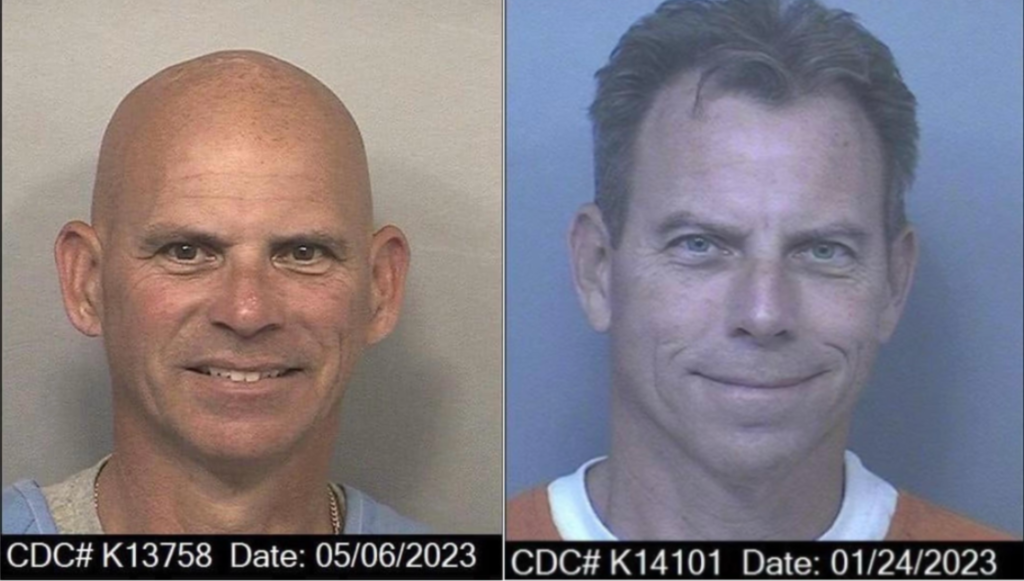The case of the Menendez brothers remains one of the most infamous and debated criminal cases in American history. Lyle and Erik Menendez gained national attention after they were charged with the brutal murders of their parents, José and Kitty Menendez, in 1989. What began as a shocking crime evolved into a media spectacle, shedding light on family dysfunction, wealth, and psychological trauma.
In this comprehensive overview, we’ll explore who the Menendez brothers are, the details of the crime, the highly publicized trial, media representations, and their current whereabouts.
Who Are the Menendez Brothers?

Menendez Brothers Lyle and Erik were born into a wealthy family in Beverly Hills, California. Their father, José Menendez, was a successful Cuban-American business executive, while their mother, Kitty Menendez, was a former schoolteacher and socialite. The brothers grew up with privileges that many could only dream of, attending elite schools and living in affluent neighbourhoods.
Despite their outward appearance of a perfect family, the Menendez brothers’ upbringing was reportedly fraught with tension, emotional neglect, and, according to the brothers, years of abuse. These claims would later become a significant part of their defence in court.
The Infamous Crime: What Happened?
On the night of August 20, 1989, the Menendez family’s seemingly idyllic life came to a brutal end. Lyle, then 21, and Erik, 18, shot their parents to death in their Beverly Hills mansion. José was shot multiple times in the back of the head, and Kitty, who attempted to escape, was shot while crawling on the floor.
Initially, the brothers claimed to have discovered the crime scene upon returning home. They seemed distraught and grief-stricken, calling 911 in a state of panic. However, their story began to unravel as investigators grew suspicious of their lavish spending following the murders. In the months after the deaths, Lyle and Erik spent exorbitant amounts of money on luxury items, including cars, watches, and vacations.
The turning point in the investigation came when Erik, wracked with guilt, confessed to his therapist. This confession, which the therapist’s mistress revealed to authorities, led to the arrest of both brothers in March 1990.
The Trial and Its Impact on American Culture
The trial of the Menendez brothers was nothing short of a media sensation. Broadcast on Court TV, millions of Americans were glued to their screens as the dramatic details of the case unfolded. The defense presented the brothers not as cold-blooded killers, but as victims of years of sexual, emotional, and psychological abuse at the hands of their father.
According to Lyle and Erik, the abuse had driven them to commit the murders out of fear for their lives. They claimed that their father’s violent tendencies and their mother’s complicity had created a toxic environment from which they saw no escape. This defence, while shocking, struck a chord with many viewers who were sympathetic to the brothers’ claims of abuse.
However, the prosecution argued that the murders were premeditated and motivated by greed. They presented evidence that the brothers had meticulously planned the killings and stood to inherit their parents’ vast fortune. The public was divided—some believed the brothers’ claims of abuse, while others viewed them as spoiled, entitled young men looking to escape their parents’ control.
In 1996, after two trials and much public debate, both Lyle and Erik were convicted of first-degree murder and sentenced to life in prison without the possibility of parole.
Media Representation and the Netflix Series
The Menendez brothers’ story has captivated the media for decades. From news specials and documentaries to books and TV series, their case has been dissected from nearly every angle. One of the most notable representations in recent years is the Netflix series The Menendez Murders: Erik Tells All. This true crime series revisits the case with interviews, archival footage, and new insights into the brothers’ lives before and after the murders.
The series renewed public interest in the case and prompted discussions about the complexities of abuse, mental health, and the criminal justice system. For many, it cast the brothers in a more sympathetic light, while for others, it reinforced their belief that justice had been served.
Where Are They Now?
Today, the Menendez Brothers “Lyle and Erik” are serving life sentences at separate prisons in California. Despite their incarceration, they remain in the public eye through occasional interviews and media portrayals. In 2018, it was revealed that the brothers had been reunited after spending more than two decades apart. Lyle was transferred to the Richard J. Donovan Correctional Facility, where Erik was already imprisoned, allowing them to see each other regularly for the first time since their conviction.

The brothers have reportedly adjusted to prison life, engaging in activities such as tutoring other inmates and participating in religious services. Despite their grim circumstances, they have found ways to stay connected with the outside world, maintaining relationships with family members and, in Erik’s case, even marrying a woman who had written to him while he was in prison.
Conclusion
The Menendez brothers’ story is a complex and tragic one, blending elements of wealth, privilege, familial dysfunction, and psychological trauma. While their crime shocked the nation, it also sparked important conversations about the nature of abuse, the criminal justice system, and the role of media in shaping public opinion.
As Lyle and Erik Menendez continue to serve life sentences, their case remains a point of fascination and controversy. Whether viewed as victims of abuse or calculating murderers, the brothers have left an indelible mark on American legal and cultural history.
This comprehensive overview provides a starting point for those seeking to understand the full scope of the Menendez brothers’ story, with links to more detailed discussions of their trial, media portrayals, and the legacy of their actions.


3 thoughts on “The Menendez Brothers: A Comprehensive Overview”